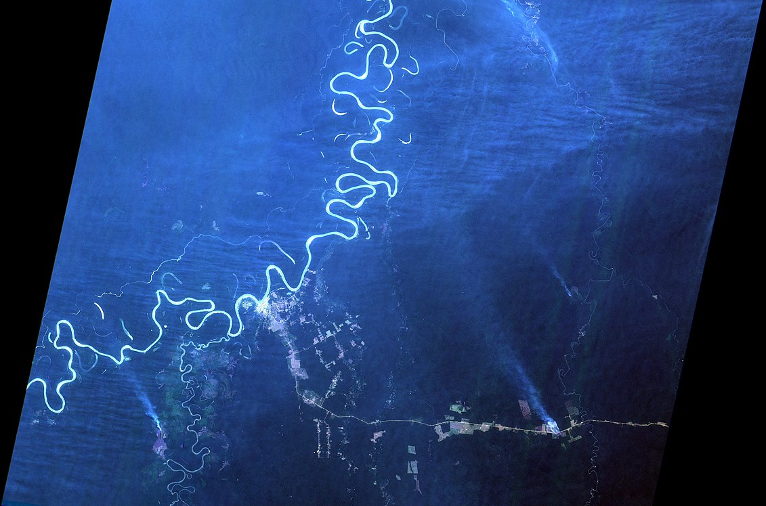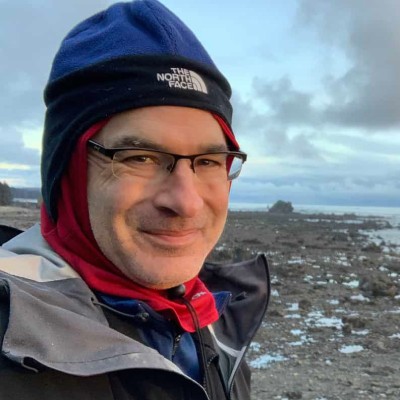PART OF THE TRUTHOUT SERIES
Planet or Profit
The Amazon rainforest is the largest rainforest on planet Earth. Generating half its own rainfall and holding 20 percent of all the world’s rivers within its borders, it covers an area two-thirds the size of the contiguous 48 United States, and produces 20 percent of the oxygen in the world’s atmosphere.
There are more than 1,100 tributaries of the Amazon River alone, with seventeen of them longer than one thousand miles. The rainforest also creates “flying rivers,” — massive streams of airborne moisture that develop above the canopy and move with the clouds and rainfall patterns across the entire continent of South America.
Many scientists believe the Amazon is the most important source of biodiversity on the planet, and statistics back that up. It contains thousands of species of birds and trees, an estimated 2.5 million species of insects, and at least 3,000 species of fish in the Rio Negro alone, with new species being discovered all the time. A new species is discovered, on average, every other day.
And now, the Amazon is on fire. Wildfires are incinerating the rainforest at a record pace, according to Brazil’s National Institute for Space Research (INPE as it is commonly referenced). INPE recently stated that there has been an 80 percent increase in wildfires in the Amazon, compared to the same period from last year.
Smoke from the burning rainforest has blotted out the sky over Sao Paulo, a city more than 1,700 miles from the fires, while satellite imagery shows smoke from the fires having spread all the way to the Atlantic coast, covering half of Brazil, and even covering parts of Paraguay, Bolivia and Peru.
Crossing Thresholds
Thomas Lovejoy has worked in Brazil’s Amazon since 1965, but he is the first to say that “we’ve barely scratched the surface” in terms of our understanding of that rainforest, as he told Truthout during an interview in 2017. He was director of the World Wildlife Fund in the U.S. for 14 years, and has been given the nickname “the godfather of biodiversity,” having coined the term “biodiversity” himself. One of his reports, alone, led to more than half of the Amazon rainforest being put under protection.
During our interview, Lovejoy gave dire warnings of things to come, including the heartbreaking wildfires we are seeing now.
We can most likely expect to see the demise of the Amazon, possibly even before 2100.
He noted that emissions limits that have been agreed to internationally will not prevent catastrophe. In a 2013 op-ed for The New York Times entitled “The Climate Change Endgame,” he wrote, “It is abundantly clear that the target of a 2-degree Celsius limit to climate change was mostly derived from what seemed convenient and doable without any reference to what it really means environmentally. Two degrees is actually too much for ecosystems.”
That is exactly what the current Amazon wildfires indicate, as the planet has warmed 1.2 degrees Celsius (1.2°C) since the industrial revolution began, and will clearly continue warming.
“Think about what it means overall,” Lovejoy said of what the planet will look and feel like when it reaches 2°C (a benchmark it is now guaranteed to far exceed). “It means a world that will have sea levels four to six meters higher. It means a world without tropical coral reefs — as we can already see those impacts now — and probably a whole bunch of thresholds will be crossed that we can’t predict.”
Instead of sequestering carbon and generating water and rainfall, the Amazon will instead become a net emitter of carbon.
When a tropical rainforest is healthy, it sequesters CO2 from the atmosphere, but when rainforests are degraded by drought, wildfires, human-caused fires, clear-cutting and human development, they release most or all of their stored carbon back into the atmosphere. The 2010 Amazon drought released as much carbon dioxide as the annual emissions of Russia and China combined, Oxford University scientists observed.
Given increasing drought and wildfire patterns, we can most likely expect to see the demise of the Amazon, possibly even before 2100.
Bolsonaro: The Tropical Trump
According to INPE, deforestation across the Amazon had already accelerated by 60 percent in June, compared to the same time period last year, as radical right-wing President Jair Bolsonaro’s horrific environmental policies began to take effect.
Last month, Greenpeace labeled Bolsonaro and his right-wing government a “threat to climate equilibrium,” while the World Wildlife Fund, like many scientists, has warned that if the Amazon reaches a tipping point, it could become a dry savannah and will no longer be capable of supporting much of the wildlife that exists there today.
Instead of sequestering carbon and generating water and rainfall, the Amazon will instead become a net emitter of carbon, and the planet will lose most of its oxygen-producing function. Meanwhile, the loss of the Amazon’s biodiversity will be beyond devastating for the planet.
Bolsonaro recently made the baseless claim that environmental NGOs were responsible for the wildfires.
Bolsonaro, like Trump in the U.S., has worked at breakneck speed to eliminate environmental regulations. He has opened up the Amazon for logging, agribusiness and mining since he took power this January.
In a particularly Trumpian moment, Bolsonaro recently made the baseless claim that environmental NGOs were responsible for the wildfires. Speaking to a steel industry congress in the capital city of Brasilia, The Guardian reported that Bolsonaro said, “On the question of burning in the Amazon, which in my opinion may have been initiated by NGOs because they lost money, what is the intention? To bring problems to Brazil.”
Bolsonaro was likely using this speech as a deflection and diversion from his real plans for the Amazon. Recently leaked documents show that Bolsonaro intends to use hate speech to further isolate and marginalize minority groups living in the Amazon, in order to move forward with predatory projects like dams that would have devastating environmental impacts.
“Development projects must be implemented on the Amazon basin to integrate it into the rest of the national territory in order to fight off international pressure for the implementation of the so-called ‘Triple A’ project,” read one of the slides from the leaked Powerpoint. “To do this, it is necessary to build the Trombetas River hydroelectric plant, the Óbidos bridge over the Amazon River, and the implementation of the BR-163 highway to the border with Suriname.”
Hence, Bolsonaro’s attacks directed at NGOs are likely part of the extreme right-wing leader’s development plans for the Amazon.
Teaser photo credit: By Coordenação-Geral de Observação da Terra/INPE from Brasil – Fumaça em área de floresta em torno do Rio Purus / Smoke in forest area around Purus River, CC BY-SA 2.0






